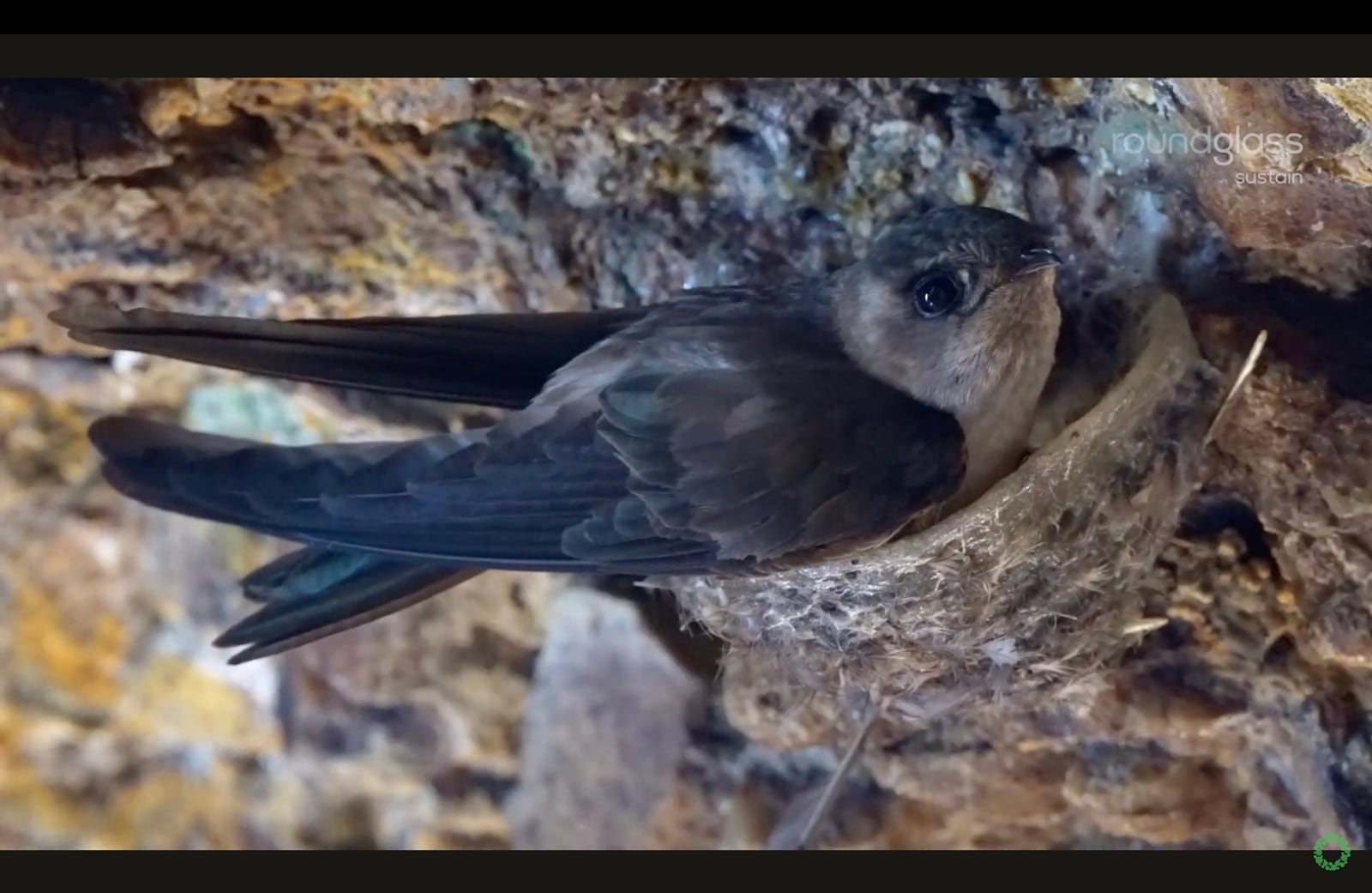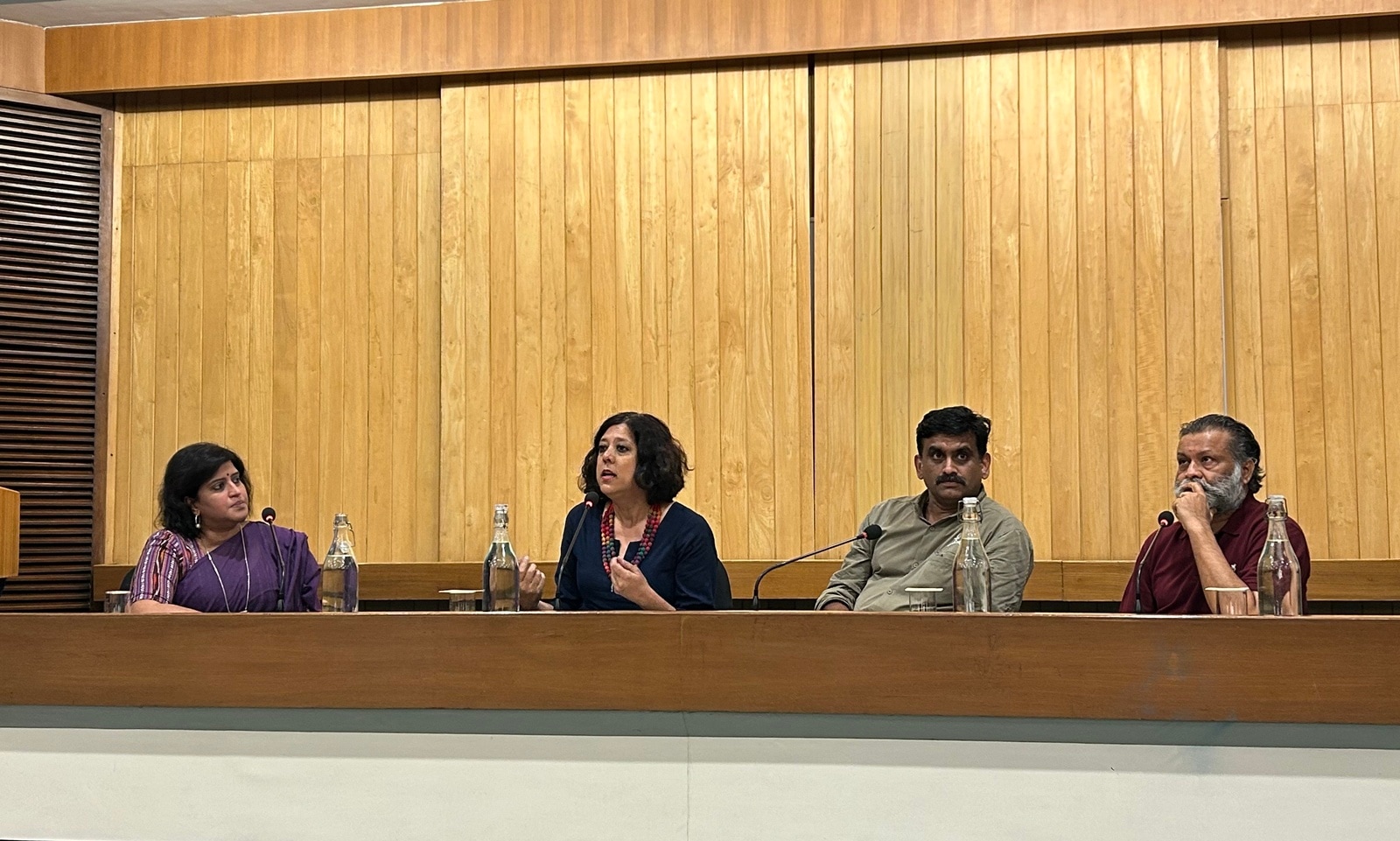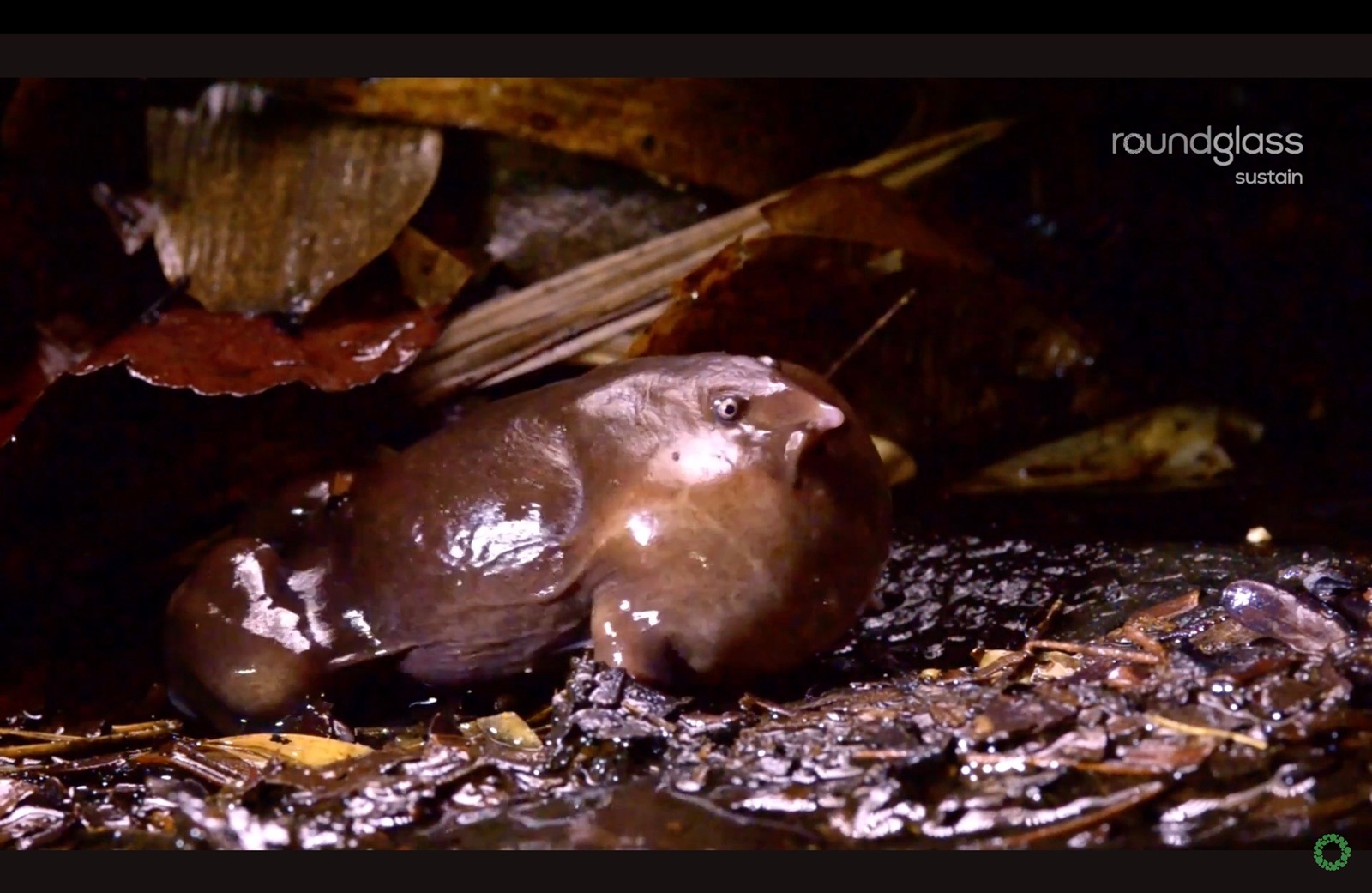A Frog that comes out of its underground, the private life only for a few hours in an year, has a genetic legacy dating back to the time of dinosaurs; A species of birds that remains monogamous for life builds its nest entrely using saliva; And a group of bears that vanished from Kargil, in ladakh, during the war, are returcing after a decade. They are guests from our natural world who had a hall full of people enthoused at gulmohar hall, india habitat centre, new delhi, during a series of documentary screen on 5.
The event titled “Scientists and their wild worlds” showcased three documenaries about these rare species and the struggles of researchers to bring four scientific truths about them. It was organized through the collective effort of three non-profit organisations: Roundglass Sustain, Wildlife Trust of India and Global Wildlife Fair.
 Echoes of the Swiftlets: Exploring the hidden world of the Indian Swiftlet
Echoes of the Swiftlets: Exploring the hidden world of the Indian Swiftlet
While ‘A Living Fossil: The Purple Frog’s Brief Life on Life’ Presents Why The Purple Frog is an enigma to humanity, it also also talks about a move to declare it as the state amphibian of Kerala. The Local Community Fondly Call It The ‘Mahabali’ Frog Due to the Frog’s Behavioural similarity with the great mythological king Mahabali. Similar to Mahabali who come out of ‘Pathala’ or underground on every year to meet his citizens, the purple frog only come out of its secret, underground domicile for Mating.
Jose Louies, CEO, Wildlife Trust of India, Who Managed to See the Frog, Noted the Comment of a Politician about the Purple Frog: ‘It’s not very beautiful to look at’. Louies pointed to the threat of extinction of the species due to habitat loss and climate change. “The first step is to understand the habitat-where it is, and Ensure habitat-level protection. Get local communities to support conservation. Able to get it done, “He said, in the panel discussion that followed the screen.
Another Documentary, ‘Science in Action: Niaz & the Brown Bears of Kargil’, Directed by Award-Winning Filmmakers Bahar Dutt and Vijay Bedi, Drew on Biologist Niaz Khan’s Journey Throughs. Mountains of Kargil, Once Torn by War. The brown bears, which nearly vanished with the war, are now returning after more than two decades. Howver, for the locals thought these bears amplify the human-unimal conflict and continent to be a source of fear.
 Megha Moorthy, Editor-in-Chief of Roundglass Sustain; Filmmaker Bahar Dutt; Jose Louies, CEO, Wildlife Trust of India; Mohit Aggarwal, Founder, Global Wildlife Fair (Credit: Deepak Rajeev)
Megha Moorthy, Editor-in-Chief of Roundglass Sustain; Filmmaker Bahar Dutt; Jose Louies, CEO, Wildlife Trust of India; Mohit Aggarwal, Founder, Global Wildlife Fair (Credit: Deepak Rajeev)
The Panel Discussion Chaired by Megha Moorthy, Editor-in-Chief of Roundglass Sustain, Had Dutt, Louies and Mohit Aggarwal, Founder, Global Wildlife Fair. They spoke about human-wildlife conflict, responsible tourism and the importing development projects, encasing conservation and environmental safety. It was an event of being sensitive to our surroundings and aware of our uncertain future.
As Scientist Shirish Manchi in ‘Echoes of Swiftlets: Exploring the hidden world of the Indian Swiftlets’ Reveled in the documentary: “Imagine that you are a0 kg person and you have to spit 60 kuppos of saliva. With the same thing on the birds, spit 10 grams of Saliva. ” With ph.d scholar dhanusha kawalkar, they show us the lives of Indian swiftlets, who live in the vengurla rocks, an archipelago of maharastra. Indian swiftlets are of two kinds, white and black. The white swiftlets of Andaman and nicobar islands for instance, we are told in the documentary take 60-90 days to make their nests. This film was officially selected in the 5th edition of all living things Environmental Film Festival That was Held in India and Abroad from 22 November to 8 December, 2024.
Story Continues Below this ad
 A Living Fossil: The Purple Frog’s Brief Life on Land
A Living Fossil: The Purple Frog’s Brief Life on Land
It was an even where our eyes were filled with the wonderful and magnificent, far above the wisdom and understanding of man.
Deepak Rajeev is an intern with the Indian express
© The Indian Express PVT LTD
